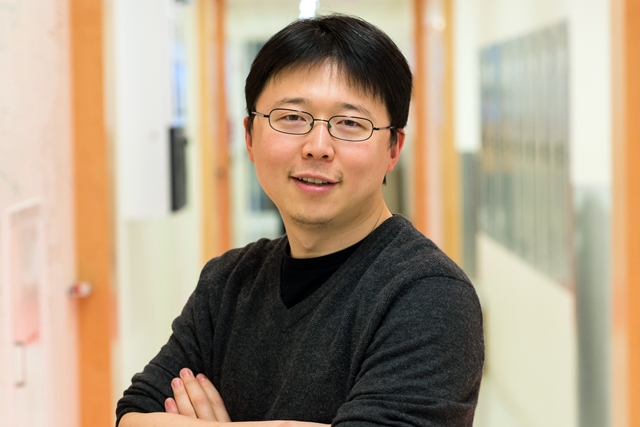12 July 2019. Researchers expanded the ability of the genetic editing technique known as Crispr to alter the make-up of RNA, adding more ways to treat diseases. A team from the McGovern Institute for Brain Research at Massachusetts Institute of Technology and the Broad Institute, affiliated with MIT and Harvard University, describes the techniques in yesterday’s issue of the journal Science (paid subscription required).
Crispr — clustered, regularly interspaced short palindromic repeats — is a genome editing technique derived from bacterial defense systems, using ribonucleic acid or RNA to identify and monitor precise locations in DNA for editing. While most work with Crispr up to now involves editing DNA sequences, the technique can also be applied to editing RNA itself. Researchers from the labs of molecular biologist David Cox and geneticist-engineer Feng Zhang at the Broad and McGovern Institutes are seeking more ways Crispr can edit RNA for research and eventually as therapeutics.
In a November 2017 Science article, many of the same authors including Cox and Zhang, showed how RNA edits can work. They used Crispr with a simpler and more precise editing enzyme called Cas13 to edit RNA chemistries, changing the amino acids that make-up RNA. In the earlier paper, the researchers changed specific instances of the amino acid adenosine to inosine, another amino acid.
In their new paper, Cox, Zhang, and colleagues enhanced their RNA editing techniques, making it possible to edit other base amino acids in RNA. In this case, the team added the amino acid cytosine as a target, changing it into the amino acid uridine. As with the earlier adenosine-to-inosine changes, these additional cytosine-to-uridine alterations change RNA instructions for protein production in cells.
The new RNA modifications are particularly important, say the authors because they make possible many more protein instructions to cells, including phosphorylation, the adding of phosphorous to proteins. Phosphorous is a key protein chemical for cell signaling, and being able to control phosphorous levels adds a powerful therapeutic tool. “To treat the diversity of genetic changes that cause disease, we need an array of precise technologies to choose from,” says Zhang in a joint institute statement. “By developing this new enzyme and combining it with the programmability and precision of Crispr, we were able to fill a critical gap in the toolbox.”
The researchers demonstrated the RNA editing technique they call Rescue — RNA editing for specific C to U exchange — in 24 disease-related mutations produced by 9 genes. Among these tests, the team used the Rescue technique to change RNA instructions for the protein beta-catenin, expressed in a number of functions, including cell adhesion and gene transcription. The team’s RNA edits made it possible to activate more beta-catenin production and subsequent cell growth on demand, with implications for healing wounds.
The tests also demonstrated another key property of RNA editing not found in DNA edits, its reversibility. The beta-catenin increases were temporary, and could be turned off to prevent uncontrolled cell growth. In addition, the researchers refined Rescue’s targeting to reduce the chance for off-target edits.
Zhang is co-founder of the start-up company Beam Therapeutics in Cambridge, Massachusetts developing precision-medicine treatments by editing DNA and RNA base-pair amino acids, similar to those described in the paper. As reported by Science & Enterprise in May 2018, Beam Therapeutics licenses Crispr technology from the Broad Institute, as well as Editas Medicine, another company founded by Zhang.
More from Science & Enterprise:
- Gold Nanoparticles Boost Crispr Delivery
- Start-Up to Use Crispr for Heart Disease, Gains $59M
- Crispr Made More Immune-System Safe
- Crispr Diagnostics Company Launches with $35M Funding
- Trials Underway Testing Crispr for Blood Disorders
* * *


 RSS - Posts
RSS - Posts
You must be logged in to post a comment.